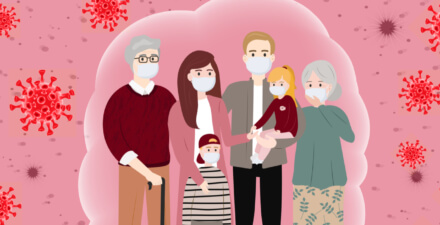Brad DeLong: Worthy reads on equitable growth, March 21-27, 2020
Worthy reads from Equitable Growth:
- Check out Heather Boushey on Twitter, in which she writes: “In response to the #coronavirus crisis, the nationwide economic shutdown has put the economy “on ice” so that it can be ramped back up after the health crisis is addressed. Concerns about falling into a deep and protracted #coronavirus recession are exacerbated by historically high economic inequality, which makes the United States particularly vulnerable to economic shocks. Policymakers should keep income flowing by helping small businesses pay their bills, ensuring any corporate assistance helps workers, boosting unemployment insurance, and providing #paidleave. The United States is one of only three industrialized countries that does not ensure every worker has access to paid time off when they are sick. We also need additional fiscal stimulus to ensure a recession does not turn into a full-scale economic depression. That means direct payments to families and more support for SNAP, Medicaid, and the Children’s Health Insurance Program. We need to remember that the economy isn’t something that happens to us—it’s the direct result of choices that policymakers make. The only entity with the power to mobilize resources and not further exacerbate rising inequality at such a large scale is the government.”
- Read my“Cases and Deaths from Coronavirus Doubling Every Three Days Is Very Bad News Indeed,” in which I write: “I confess I am positively unmanned by the every-three-days doubling of reported cases and deaths here in the United States. I had thought that we would see true cases doubling every seven days. And back when reported cases started doubling every three days, I was encouraged, because I thought it meant that we were catching up on testing, and so getting closer to detecting the bulk of the symptomatic cases. But now it looks like that was wrong: reported cases were doubling every three days because true cases were doubling every three days—that is what deaths tell us was happening to true cases up until three weeks ago. The lack of case curve-bending makes me think that testing is not improving. It makes me think that reported cases are doubling every three days because true cases are doubling every three days. That means that the Trump administration has only 40 percent as much time to get its ass in gear as I thought it did. And that means the chances it will are very very low indeed.”
- Also read my “The Trump Administration’s Epic COVID-19 Failure,” in which I write: “As officials at the U.S. Centers for Disease Control and other public-health bodies surely must have recognized, asymptomatic transmission means that the standard method of quarantining symptomatic travelers when they cross national (or provincial) borders is insufficient. It also means that we have known for almost two months that we were playing a long game against the virus. With its spread more or less inevitable, the primary task was always to reduce the pace of community transmission as much as possible, so that health-care systems would not be overwhelmed before a vaccine could be developed, tested, and deployed. In the long game against a contagious virus, how to mitigate transmission is no secret. In Singapore, which has largely contained the outbreak within its borders, all travelers from abroad have been required to self-quarantine for 14 days, regardless of whether they have symptoms. In Japan, South Korea, and other countries, testing for COVID-19 has been conducted on a massive scale. These are the measures that responsible governments take. You test as many people as you can, and when you locate areas of community transmission, you lock them down. At the same time, you build a database of all those who have already developed immunity and thus may safely resume their normal routine.”
Worthy reads not from Equitable Growth:
- This is by a substantial margin the best thing I have seen on the coronavirus, and where we are with respect to it. My confidence that the Trump administration and the Republican senatorial majority are up to the task of organizing this is too low to measure. Read Richard Danzig and Marc Lipsitch, “Prepare Now for the Long War Against Coronavirus,” in which they write: “It’s essential to clearly envision the problems we’ll face over the next 12 to 18 months and mobilize to respond right away. Here are five priority problems and the actions we should take now … Minimizing errors and uncertainties about and maximizing confidence in our judgments about cure will soon become as important as present efforts at disease detection. People who recover from Covid-19 probably can work in hospitals, emergency response settings and ordinary jobs without fear of infection … We need to identify these people and assess how soon after their recovery they become unlikely to infect others … Assuring that someone has immunity against this new virus requires tests that are distinct from the PCR tests of nose and throat swabs now being used to identify infections. We need to develop and distribute antibody tests … Problem: If current efforts at social distancing succeed in spacing out infections, we face many months of demand for treatment … It’s essential to reduce demand for hospitalization by establishing methods to support lengthy treatment at home … telemedicine, house calls by nurse practitioners, on-line instruction for home care-givers, and support for safe travel … the production of enormous quantities of ventilators, personal protective equipment for health care workers and other medical supplies, and to ramp up our capacity for viral testing … Pervasive illness affecting most of the U.S. population over the course of a year will threaten not just health care systems but other critical infrastructure as well … People responsible for food production and delivery, power distribution, telecommunication, drinking water, transportation, cyber services and police need to ramp up efforts to protect and maintain these systems, and to detect and report any fragilities and failures. The Defense Department should be engaged to backstop these systems … It is essential to ensure that the United States can hold a national election in November safely, securely and democratically, even if contagion persists and social distancing is still necessary …This problem might be best addressed by enlisting a private, non-partisan entity (for example, a major foundation) to offer expert advice to Congress and to state and federal officials. With a sense of urgency and more than half a year to plan, voting by mail or via the internet—or other alternatives—could be made to work everywhere … A long school shutdown and widespread illness will mean missed education, the loss of school nutrition for needy kids, difficulties for teachers separated from their workplace, and psychological effects … The 50 states can address these issues individually, or they can, more effectively, band together to devise high-quality approaches … We can win … by treating it as both an emergency and a long-term challenge. We are rich, ingenious and resolute enough to prevail. But this virus has already shown we cannot wait until the moment of need to get organized.”
- Let me endorse this as a thoughtful assessment of how important it is to keep the U.S. economy from sending anybody a “you are bankrupt/shut down” signal in this public health crisis. Instead, every business and every worker should be being sent a “you are, at most, on pause/be ready to resume” signal. How to make sure that signal is sent requires fiscal stimulus an order of magnitude greater than the $2.2 trillion currently in the headlines. For one thing, it requires tolerance of inflation, as prices of medical equipment and necessities rise and as social distancing temporarily reduces productivity elsewhere in the economy. Read Peter R. Orszag, “Social Distancing Makes Sense Only With Huge Fiscal Stimulus,” in which he writes: “Mandating social distancing in response to the Covid-19 crisis requires socializing the economic costs of doing so. We as a society can’t reasonably require social distancing, with the massive economic consequences it entails, and believe that most of those costs should be privately borne. We therefore need to either abandon social distancing (thereby overwhelming health systems and sparking untold deaths) or enact much larger stimulus measures. And by much larger I mean far larger even than the eye-popping figures the Trump administration is now pursuing … The disruption is so vast … that government failure to act will result in an avalanche of bankruptcies and extended unemployment that will, in turn, inflict lasting damage on businesses and families, even after the health crisis passes … not being able to put Humpty Dumpty back together again. It is why government intervention cannot be limited to the sectors most directly affected (airlines and hotels, for example) and must take new forms beyond the conventional tools (such as rebates to individuals). While many existing stimulus measures are necessary and helpful … they are terribly inadequate … The dilemmas we face will continue until an effective anti-viral or therapeutic can be found that allows us to contract the disease without suffering significant harm. In the meantime, even if current efforts are successful at attenuating the spread of the disease over the next several weeks, social distancing will need to be re-imposed in cycles. Given the plausible timetable for developing a vaccine, and unless we get very lucky and the virus itself mutates in a less harmful direction, these cycles could continue for well more than a year … This is a fiscal risk worth taking … [To] those who argue that the cost is too high or that a stunning increase in the deficit is too risky [I say:] If you don’t like the fiscal cost but you favor social distancing, what you’re really saying is that you are willing to accept millions of bankruptcies and the ripping apart of corporate and social fabrics across the world … The economic harm comes mostly from the sudden stop … The demographics of those suffering from coronavirus and those suffering from the economic virus are quite different … Emmanuel Saez and Gabriel Zucman have proposed that governments simply pay companies to cushion the shock: “In the context of this pandemic, we need a new form of social insurance, one that directly targets and works through businesses,” they wrote earlier this month. “The most direct way to provide this insurance is to have the government act as a buyer of last resort. If the government fully replaces the demand that evaporates, each business can keep paying its workers and maintain its capital stock, as if it was operating under business as usual.” And Andrew Ross Sorkin of The New York Times has suggested a universal loan program, with a zero interest rate and extended repayment terms. One thing is clear about stimulus measures in this crisis: Bigger is better.”
- In a good world, Jim Stock would already be back in the Eisenhower old executive office building chairing the Council of Economic Advisors during this crisis. He is vastly more thoughtful, more confident, and more up to speed on the issues and the trade-offs that we face, economically, during this public health crisis. But we are not in a good world. We are in a very bad one. Already, the United States his response to the coronavirus is the worst in the world. And it only looks as though the gap between us and other countries is going to grow over the next months. Read Jim Stock, “Coronavirus: Data Gaps and the Policy Response,” in which he writes: “Social distancing and business shutdowns … [affect] the case transmission rate β…. [One] policy design question is how to achieve that case transmission rate while minimizing economic cost. A second. .. is the optimal. .. β, trading off … economic cost[s] … against … deaths … [We] lack … data … Tests have been rationed … The fraction of tests that are positive do not estimate the population rate of infection … The COVID-19 asymptomatic rate … estimates in the epidemiological literature range from 0.18 to 0.86. However, the asymptomatic rate could be estimated accurately and quickly by testing a random sample of the overall population. The policy response and its economic consequences hinge critically on the asymptomatic rate. As we illustrate using two policy paths for β, without better knowledge of this knowable parameter, policymakers could make needlessly conservative decisions which would have vast economic costs.”







